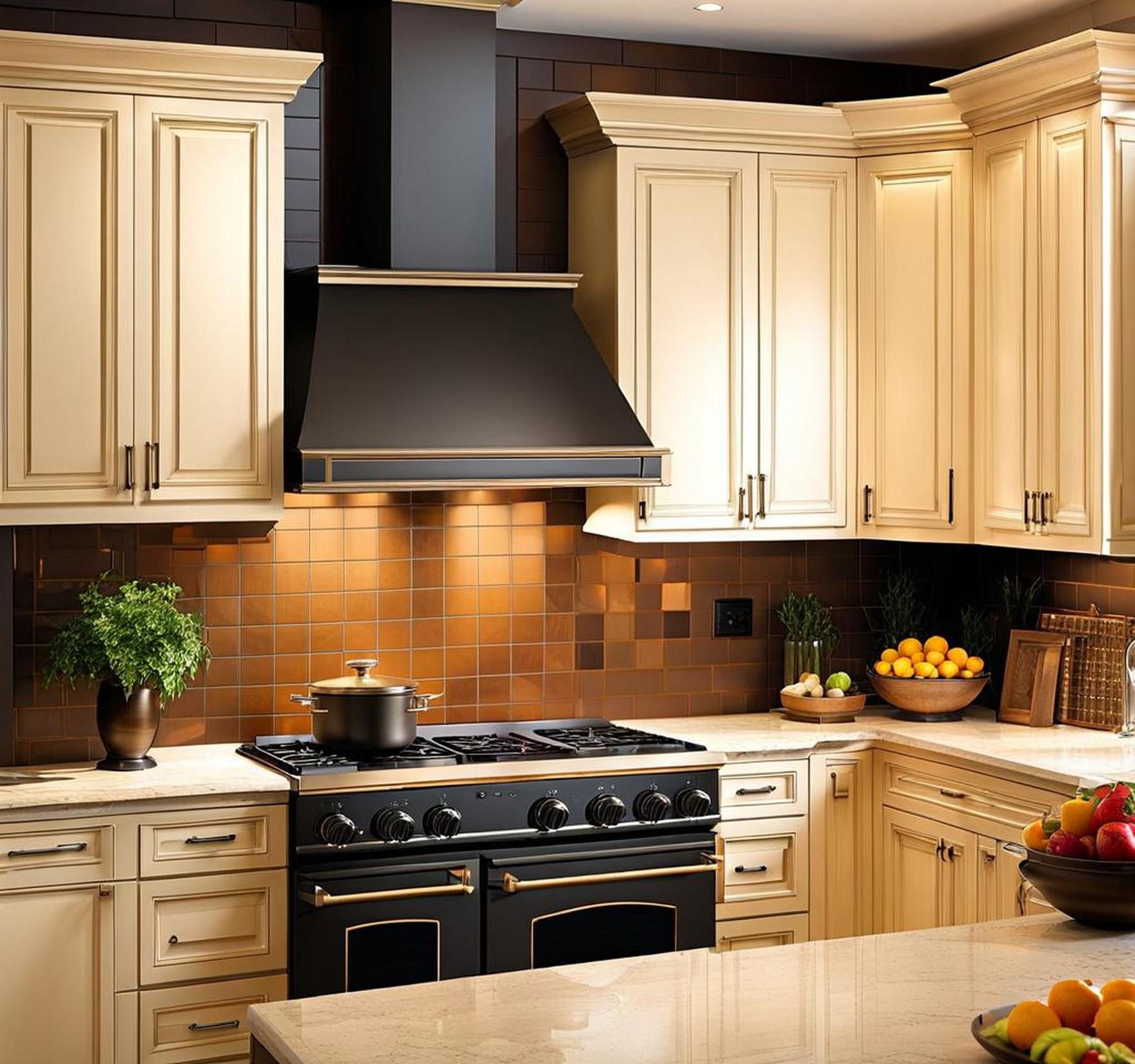Installing a range hood at the proper distance above your stove is crucial for capturing cooking fumes and odors effectively. But what exactly is the ideal height, and why does it matter? We’ll explain the key factors in determining the right range hood clearance for your kitchen.
Range hoods work by drawing in the air over your stove using powerful fans. This allows them to trap smoke, grease, and other cooking byproducts so they don’t spread throughout your home. To do this efficiently, however, the hood needs to be positioned at an optimal distance from the heat source.
Recommended Distances by Stove Type
The recommended distance between a range hood and stove depends on whether you have an electric or gas cooktop:
Electric Stoves
For electric stovetops, a range hood distance of 20-24 inches above the cooking surface is typical. Always check the manufacturer’s instructions for your specific appliance, as clearance requirements may vary.
Positioning the hood in this height range helps safely capture rising heat, grease, and fumes without being so low it could pose a fire hazard. It also allows enough overhead room for cookware without hitting the hood.
Under-cabinet range hoods mounted on the wall behind an electric stove can often be installed at the lower end of this height range. Hoods with rear vents directly above the cooktop may need to be at the higher end for proper ducting.
Gas Stoves
Gas stoves produce more heat than electric ranges, so the minimum distance is increased. For gas cooktops, optimal range hood height is typically 24-30 inches above the burners.
The greater clearance is safer for dealing with the higher BTUs produced by gas flames. It also accommodates tall pots and pans without interference from the hood overhead.

As with electric ranges, the manufacturer’s instructions for your specific gas cooktop and hood should always take precedence over general recommendations.
Range Hood Width Guidelines
In addition to height above the cooking surface, proper range hood width coverage is also important. General guidelines recommend:
- The hood should be at least as wide as the cooktop underneath.
- For best coverage, extend the range hood 3-6 inches past the edges of the cooktop.
Adequate width helps capture and funnel away lateral fumes and smoke from the entire cooktop area. Going slightly wider than the stove helps prevent stray emissions from escaping around the sides.
Range Hood Depth Guidelines
For depth, or how far the hood extends past the front of the stove, recommendations typically are:
- The hood depth should be 2-3 inches less than the cooktop depth.
- This allows full coverage of the front burners.
With adequate depth, the range hood will effectively trap fumes coming from pots and pans used on front elements. Skimping on depth risks fumes spilling beyond the hood’s suction area.
Considering the Kitchen Layout
While the above guidelines are a good starting point, your particular kitchen layout can also impact the ideal range hood distance and position. For example:
- Smaller kitchens may require a reduced hood distance from the cooktop to adequately capture fumes in the cramped space.
- Larger kitchens provide more flexibility, allowing greater separation between the range hood and stove if desired.
- Nearby walls, overhead cabinets, and soffits may limit available clearance between appliances.
Take measurements of your existing layout, including all surrounding cabinets and features that could affect placement. This will help determine the most effective hood distance within the confines of your individual space.
The CFM Factor – Ventilation Strength
CFM stands for “cubic feet per minute” and represents the airflow rate of a range hood. The higher the CFM, the faster and more powerful the ventilation.
Hoods with higher CFM ratings can sometimes be mounted slightly farther away from the cooktop without losing suction efficiency. However, it’s still important to stay within the manufacturer’s recommended clearance range.
Don’t sacrifice the minimum safe hood distance solely for greater CFM power. Combined with proper placement, high CFM provides optimal fume removal.
Aesthetic Considerations
The range hood is a visually prominent element of your kitchen. Beyond function, also consider aesthetics when deciding on placement:
- Select a hood style and finish that aligns with your decor – stainless steel, colored, copper, etc.
- Under-cabinet and flush mount hoods have a lower profile, while chimney hoods make a bold statement.
Your hood shouldn’t be an eyesore. But remember, maintaining the proper clearance between the hood and cooktop should take priority over aesthetics alone.
Additional Safety Considerations
Beyond following manufacturer guidelines, some other safety tips for range hood placement include:
- Don’t install directly next to kitchen cabinets, which could pose a fire hazard.
- Avoid positioning the hood directly near windows or other flammable surfaces.
- Check ceiling height to ensure adequate room for ventilation ducting.
Your installer can help identify any potential safety issues related to the range hood layout. Better to discover any problems ahead of time.
Finding the optimal range hood distance from your cooktop involves weighing several factors. While general height guidelines exist, your stove type, kitchen dimensions, and ventilation power all impact placement. Referring to the manufacturer’s instructions is always a safe bet. With some planning and forethought, you can install your range hood at the ideal position to keep your kitchen free of lingering fumes and odors.
